Hot hair extension: features, technique and tools
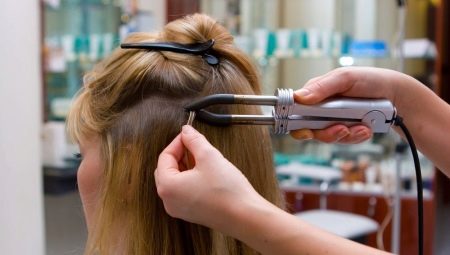
Long thick hair is undeniably very feminine and sexy. However, not everyone succeeds in growing them. There are naturally thin and sparse hair, which, reaching a certain length, turns into a "rat's tail". But there is a solution for the owners of such hair - you can extend the hair. The article will discuss the so-called hot build-up: we will consider its varieties, the necessary tools, and also talk about the advantages and disadvantages of this method.
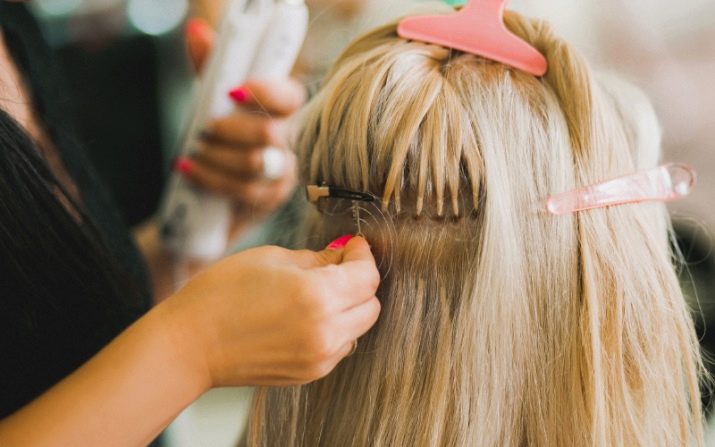
Technologies
First you need to understand what a hot build is. This is a method of attaching curls - "donors" to natural ones using melted microcapsules.
Such capsules are almost invisible in the hair, they do not harm the hair, since they are made of a composition similar to keratin.
There are several methods of hot hair extension. Let's consider them.
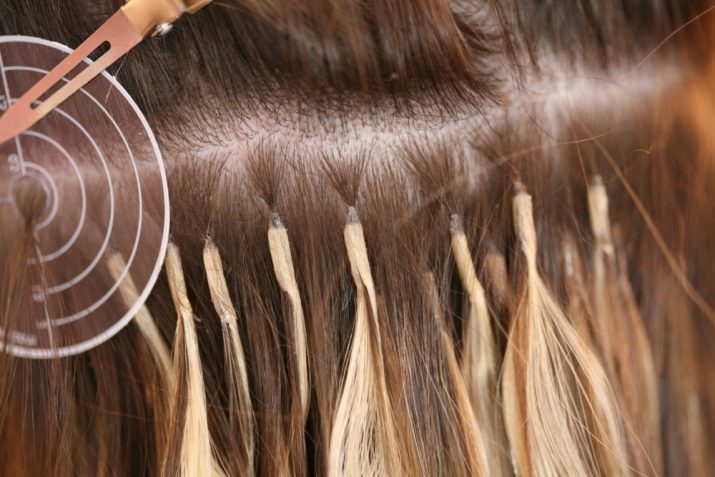
English method
Currently considered obsolete. It consists in the formation of strands by the master on his own, when he collects a "bunch" of hair - "donors" (there can be about 40-50 pieces), then applies hot resin to its base using a "pistol" and well presses the strand to the hair. The resin hardens and "dries" tightly to natural hair. Nowadays, this method is not popular, because the resin capsule quickly collapses, artificial strands begin to disband and disappear when combing. In addition, during the correction procedure, you will have to spend a lot of time, and there is a risk of damage to the hair.
The capsule is first softened, then cracked with tongs, the resin is peeled off the extended strand, and finally, the curls are formed again and built up in the above order.
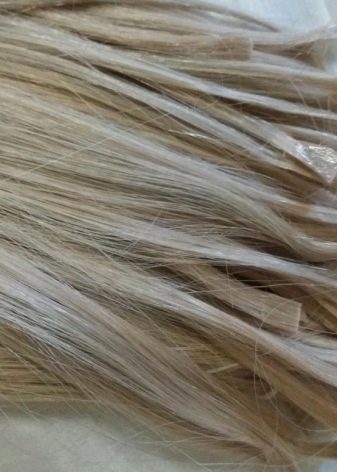
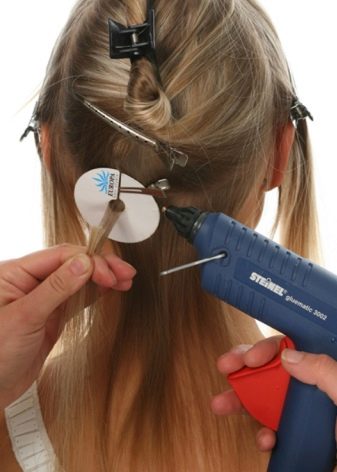
Italian method
The discoverers of this method decided to improve upon the previous technology. They started producing ready-made strands with a keratin capsule at the base. Such strands were fastened by thermal action using special tongs.
This method, of course, became more popular than English, since the time spent on assembling the strand was saved. Plus, keratin capsules are found to be more gentle on natural hair. Therefore, the Italian technique has become in demand in beauty salons.
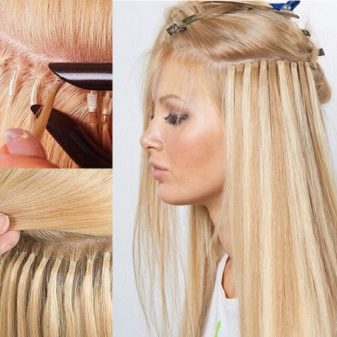
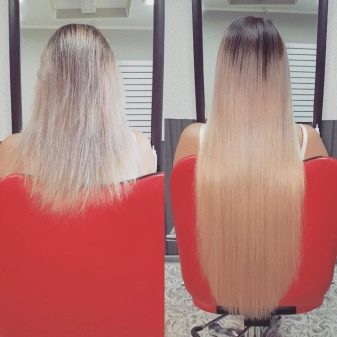
Microwelling
This option was invented when it became clear that the Italian method has one drawback: with its help it is impossible to build up bangs, place strands along the parting. Micro build-up allows you to do this. It uses very thin curls, and sometimes single hairs. The strands are fastened using the Extend Magic tool, which heats up to 90 degrees Celsius (ordinary heat tongs give out all 200), thus damaging natural hair. Even representatives of the stronger sex resort to microwelling, who want to give their hair density and hide the bald patches.
Currently, this method is considered optimal and gentle on the hair.
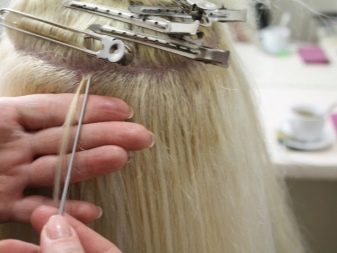
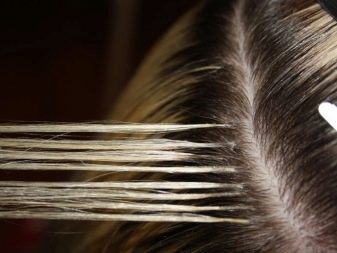
Choosing equipment
Now let's look at what tools the masters use, practicing hot build-up technology.
- Thermal tongs. They are used with the Italian method. There are models on the market with the ability to regulate the operating temperature (up to 200 degrees inclusive), as well as those that maintain a constant heating level throughout the entire procedure. The first type of forceps has a flat surface, and the second has rounded tips. Both those and others like the masters.
- Keratin. As we already understood from the above, it is used to form microcapsules at the base of the “donor” strands and is attached to natural hair by melting. Does not harm hair and simplifies building. Extends the wearing period of hair extensions up to three months.
- Resin. It is used only by those masters who practice the English method of building.

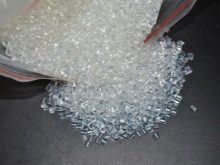

- Microcapsule removal forceps. This device is designed for atraumatic softening and subsequent removal of the microcapsule from the hair.
- Extension laser. An innovative device with which you can attach strands so that they will be almost invisible in the hair. It has not yet become widespread due to its very high cost - not every hairdresser is able to "fork out" for it.
- Glue gun. It is used for building up by the English method. The principle of its work is as follows: it heats the resin mass to the desired temperature, after which it adheres to natural hair and dries up.
- Ultrasound apparatus. Helps to speed up the building process. Microcapsules are heated by ultrasonic action, which spares the hair and brings comfort to the procedure.
Naturally, each hairdresser, whose price list includes hair extension services, chooses which technique he will use. Accordingly, he acquires a suitable toolkit for himself.

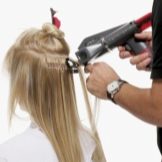

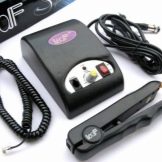
Advantages and disadvantages
Hot hair extensions have their pros and cons. Let's consider them in order.
Pros:
- hot build-up helps to hide the attachment points of the "donor" strands, and the result is an almost uniform naturalistic hair;
- you will not be constrained in the choice of styling, since keratin microcapsules are invisible in the hair;
- if you follow all the recommendations of the master for the care of extended strands, you can enjoy thick and long hair for about three months;
- periodically performing correction and not “over-wearing” the “donor” strands, you can walk with extended curls up to a year.
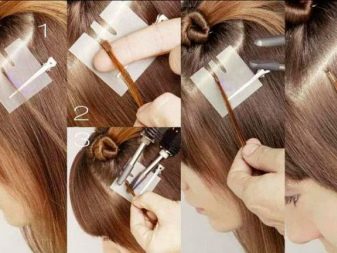
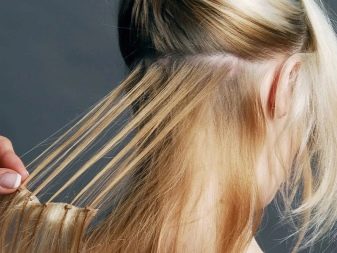
Minuses:
- if your choice falls on the Italian or English method, you will have to be content with loose curls, since you cannot do "tails" and high hairstyles;
- correction procedure is a rather lengthy process;
- microcapsules can "crawl" if exposed to too much;
- if the capsules are large, they can "remind" of their presence with uncomfortable sensations;
- girls with thin thin hair can choose only micro-extensions;
- strands - "donors" tend to comb out, especially when attached to resin.
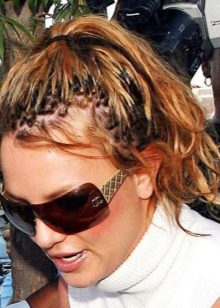
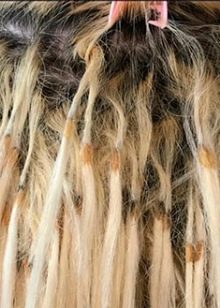
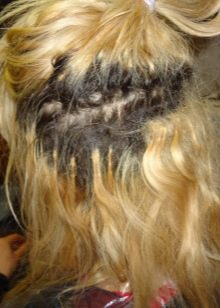
Tips from the masters
Before carrying out the hot extension procedure, even in an elite salon with a respected master, read the advice of professionals for choosing the best technique and understanding all the complexities of caring for such hair.
- Explore all the suggestions from hairdressers practicing in your city: read reviews, visit the master yourself, sign up for a consultation and listen to his recommendations. Pay attention to what materials he works with. Don't be embarrassed and ask for his portfolio. Approach the choice of a master responsibly.
- To make the "donor" strands last as long as possible, wash your hair, holding it vertically. Be sure to dry your hair with a hairdryer and in no case go to bed with damp hair - this is very harmful.
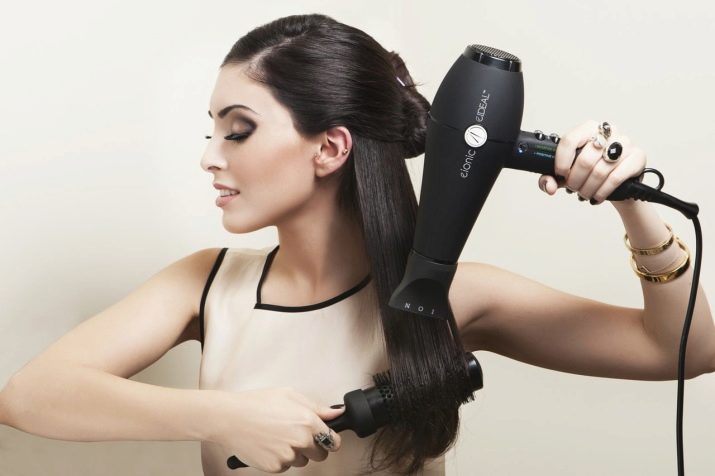
- If you are a lover of masks and conditioners, learn to apply them to only 1/3 of the entire length of your hair. It is impossible for the funds to fall on the roots, as the "donor" strands can slip off.
- Comb more carefully so as not to injure the microcapsules and not provoke their breakage and disconnection. Before going to bed, it is recommended to braid the curls in a pigtail - so they will not get confused.
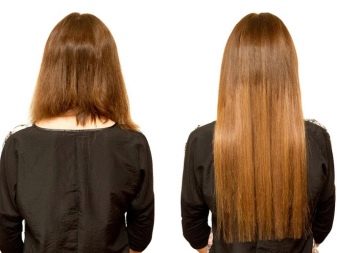
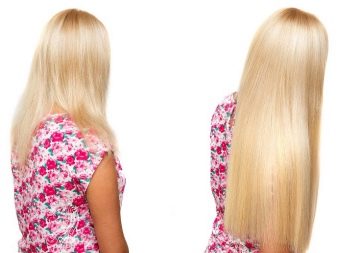
See the following video for the hot hair extension process.








